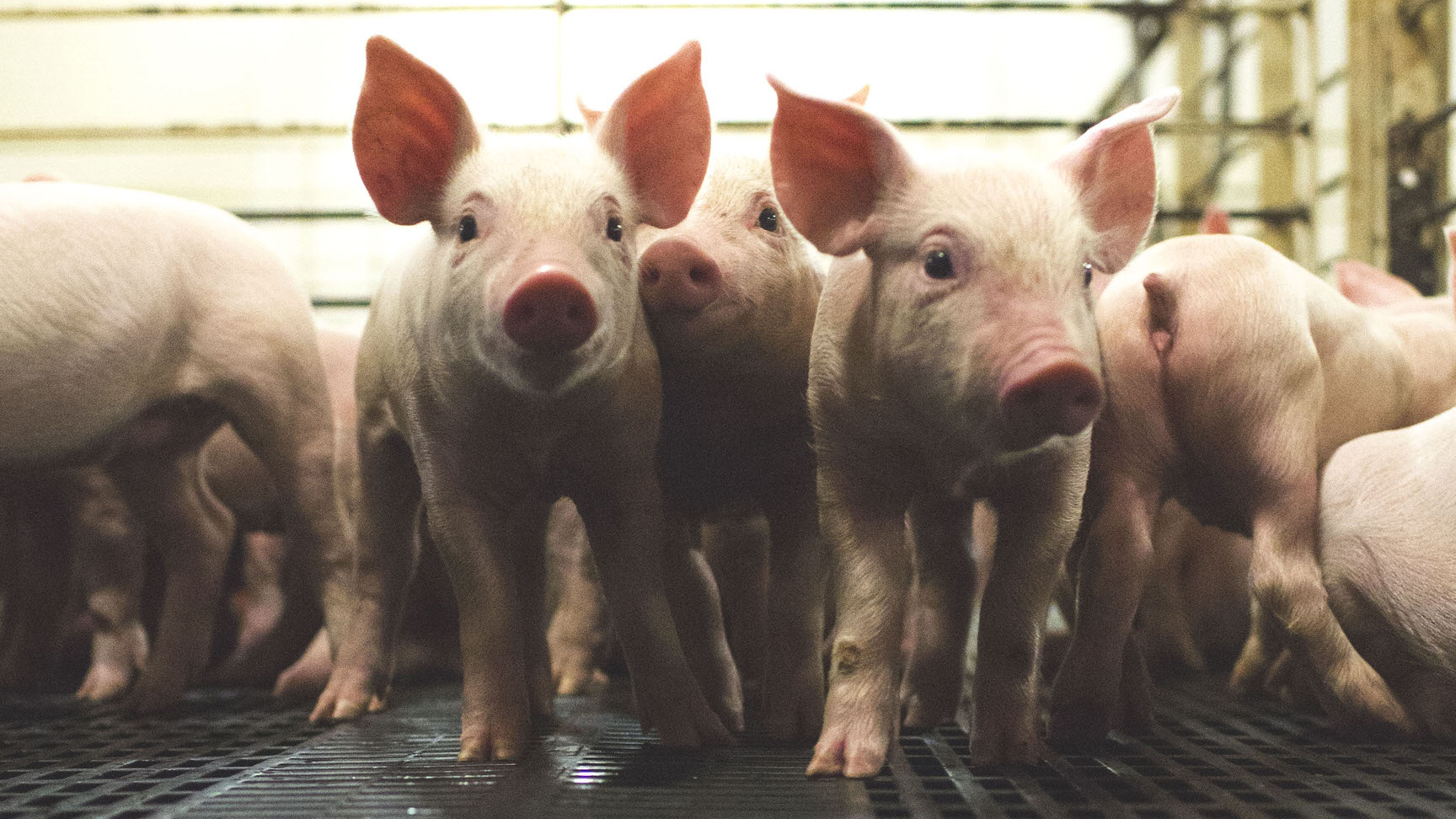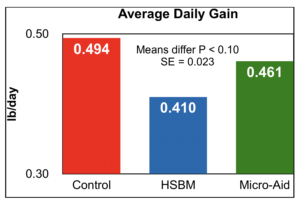
Benefits of Micro-Aid® in High-Soybean Meal Nursery Pig Diets
180 crossbred pigs were blocked by weight (average BW = 13.4 lb) and allotted randomly to dietary treatments (10 pigs/pen and 6 reps/treatment) for a 43-day test. The three dietary treatments were: 1) Control (low SBM with plasma, fish meal); 2) HSBM (high-SBM without plasma, fishmeal); and 3) Micro-Aid® (HSBM + Micro-Aid® at 125 mg/kg). A fortified diet exceeding the nutrient requirements of the nursery pig was fed in four dietary phases: 1) Day 0-7 (Control = 15% SBM; HSBM = 30% SBM); 2) Day 7-14 (Control = 20% SBM; HSBM = 30% SBM); 3) Day 14-21 (Control = 26.3% SBM; HSBM = 30% SBM); and 4) Day 21-43 (Control and HSBM = 34.3% SBM). Pigs were weighed and feed disappearance recorded weekly to calculate average daily gain (ADG), average daily feed intake (ADFI), and gain:feed (G:F) for the dietary phases and overall experiment.
As shown in the figure below, pigs fed the Control diet had greater (P < 0.05) ADG compared with pigs fed the HSBM diet. This greater difference between the Control and HSBM diets was also noted in ADFI and G:F. Furthermore, there was no difference (P > 0.10) in growth performance between pigs fed the Control and Micro-Aid® diets during Day 0 to 14. However, pigs fed Micro-Aid® tended to have greater (P < 0.10) ADG and greater (P < 0.04) G:F (0.780 vs. 0.730) compared with pigs fed the HSBM diet during the initial two dietary phases.

- Consistent with prior industry experience, newly weaned pigs fed diets containing high levels of SBM during the initial nursery phases had decreased performance but recovered in the later dietary phases as their gastrointestinal tract evolved to adapt to the dietary protein source.
- The addition of Micro-Aid® helped to alleviate the negative effects of high-SBM on growth performance during the initial nursery phases (Weeks 2-3).
- This data demonstrates that dietary feed costs can be reduced in early phase nursery diets by replacing expensive animal protein sources with less expensive SBM and adding Micro-Aid® at 125 ppm.
- Extensive research has proven the environmental, performance, and health benefits of Micro-Aid® in numerous livestock and poultry species. All these benefits are attributed to the fact that when fed, Micro-Aid® starts working enterically to promote a healthier gastrointestinal tract environment. Current research supports this fact and demonstrates the impact a healthier gastrointestinal tract has on improved nutrient utilization by allowing the use of a less expensive plant protein sources like soybean meal with known anti-nutritional factors to the newly weaned pig.

